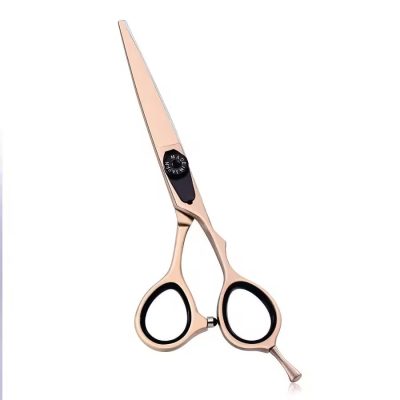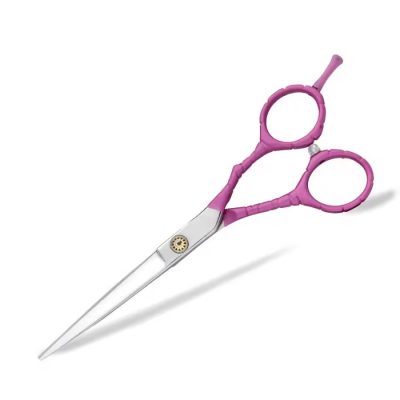Introduction
The type of blade used in hair scissors plays a crucial role in the effectiveness of different hair cutting techniques. Understanding the differences between blade types can help both professional stylists and at-home users achieve the best results. In this blog post, we’ll explore various blade types and their impact on hair cutting techniques.
Convex Blades
Convex blades are known for their sharpness and precision. These blades feature a smooth, curved edge that allows for clean, seamless cuts. Convex blades are ideal for advanced cutting techniques such as slide cutting and point cutting. Their sharpness reduces hair damage and split ends, making them a favorite among professional stylists. Convex blades are perfect for creating soft, textured looks and are commonly used in high-end salon scissors.
Beveled Blades
Beveled blades have a straight edge with a slight angle, making them versatile for a variety of cutting techniques. These blades are less sharp than convex blades but offer excellent durability and control. Beveled blades are suitable for blunt cuts, layering, and texturizing. Their robust design makes them a reliable choice for both professional and at-home use, especially for those new to hair cutting. Beveled blades are also easier to maintain and sharpen.
Micro-Serrated Blades
Micro-serrated blades feature tiny grooves along the cutting edge, providing extra grip on the hair. These blades prevent hair from slipping, ensuring precise cuts. Micro-serrated blades are ideal for cutting wet or thick hair and are often used for precision cuts and detailed work. The added grip makes them particularly useful for blunt cuts and bobs, where accuracy is paramount. However, they are not suitable for slide cutting or point cutting due to the serrated edge.
Texturizing Blades
Texturizing blades, also known as thinning shears, have teeth along one or both blades. These blades are designed to remove bulk and add texture to the hair without significantly altering the length. Texturizing blades are perfect for blending layers, softening lines, and creating a natural look. They are particularly beneficial for thick or curly hair, helping to manage volume and enhance the hairstyle’s shape. Texturizing blades come in various tooth configurations, allowing for different levels of texturizing.
Curved Blades
Curved blades feature a gentle curve along the cutting edge, allowing for more natural and rounded cuts. These blades are ideal for creating soft, flowing lines and cutting along the natural curve of the head. Curved blades provide better control in tight or difficult-to-reach areas, such as around the ears and nape of the neck. They are also excellent for shaping bangs and creating layered looks with a natural finish.
Conclusion
The type of blade used in hair scissors significantly impacts the effectiveness of various cutting techniques. Convex blades offer unparalleled sharpness and precision, while beveled blades provide versatility and durability. Micro-serrated blades ensure a secure grip on the hair, and texturizing blades add texture and remove bulk. Curved blades are perfect for creating natural, rounded cuts. By understanding the strengths and applications of each blade type, both professional stylists and at-home users can select the right scissors to achieve their desired hairstyles with precision and ease.








